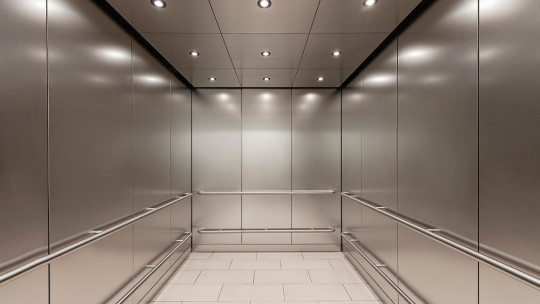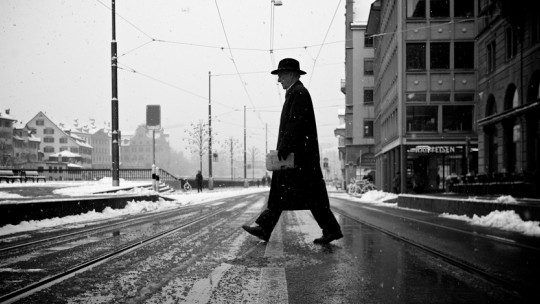
Sheldon Cooper, one of the characters in the series “The Big Bang Theory,” is well known for his great love of trains, almost obsessive, although it is not the only peculiarity that defines him.
In today’s article we are going to talk about a phobia, siderodromophobia which could be seen as just the opposite of what this character feels. This consists of the irrational fear of trains, similar vehicles and riding them.
It is a relatively common fear, especially related to news about railway disasters and urban legends in which trains play a leading role. Let’s take a closer look at what characteristics define this specific phobia.
What is siderodromophobia?
Siderodromophobia (from the Greek “sidero”, “iron or iron”; “dromo”, “racing, circuit”; “phobos”, “fear, fear”) is fear of trains, railways and the subway, in addition to traveling with these vehicles Those who suffer from this specific phobia feel incapable of traveling by train and, in the most severe cases, approaching one, talking or seeing images about them.
Siderodromophobia is related to other phobias associated with traveling, either in general or in specific vehicles, such as motorphobia (fear of cars), amaxophobia (fear of driving at night), aerophobia (fear of planes and flying) or naviphobia (fear of sailing).
Symptoms
As with other phobias, the siderophobic person feels very high levels of anxiety when faced with the phobic stimulus, in this case trains, or if they are immersed in a situation related to them, such as being on one of them. these vehicles.
The physiological symptoms coincide with those of any other phobia, being mainly palpitations, tremors, excessive sweating, irregular heartbeat, dryness and pastiness in the mouth, nausea and breathing difficulties. As for the psychological ones, there is high anxiety, thinking that the train is going to derail, fear of having to catch one…
People with a fear of trains carry out behaviors with the intention of avoiding any situation that is related to them. This may involve avoiding riding one of them, watching movies or series in which they appear, not going near the train station, among others. This can involve a highly variable degree of interference in the patient’s life given that it is common for there to be other means of transportation that follow the same route, it should be said that depending on where you live, the train is perhaps the only transportation option or the fastest, so avoiding it means wasting a lot of time looking for routes alternatives.
Possible causes
The causes behind siderodromophobia can be very varied, being a combination of external events, such as having a bad experience with a train, along with personality traits that serve to establish a phobic disorder, especially if one is very neurotic. Various explanations have been tried to understand why the fear of trains and related vehicles appears.
Since psychoanalysis, starting with Sigmund Freud himself, the sensations of traveling by train have been related to sexuality. In 1906 Freud explained that the relationship between traveling by train and sexual desire is related to the pleasurable sensation generated by the trip, especially with the movement of the car. The person who represses his sexuality might view train travel as inappropriate and therefore be afraid of it, viewing it as obscene. This explanation has no scientific basis.
However, it is important to mention that in Freud’s time it was not unusual for crimes to be committed on trains, in addition to the fact that this means of transportation could suffer fatal accidents. All kinds of news about railway disasters appeared in the newspapers, so it is not surprising that at that time, being the fastest transport, it was also seen as the most dangerous.
This also happens today. Although trains and subways are transports that have improved their safety compared to yesteryear, from time to time from time to time accidents occur, some fatal, that make society shake with fear This can become the reason why a person begins to fear these vehicles, avoiding taking them until reaching the point where it is impossible to approach one again.
Another interesting cause to mention is the way trains are seen in popular culture, especially when talking about scary stories and urban legends. There are many stories of people who have committed suicide by jumping onto the train tracks, or who have been accidentally run over while crossing the track. Although these misfortunes happen in real life, it is the way in which it is transformed into a scary story that would make these vehicles very fearful.
Treatments
Depending on how afraid you are of trains, the person may or may not dare to ride one, although most likely they will not. It is because of that The help of a professional is necessary to treat this type of specific phobia in addition to using a program organized in steps that, progressively, allow the person to ride a train or subway.
This phobia has certain similarities with the phobia of airplanes, only it has one difference that makes the treatment of the siderodromophobe easier: traveling by train (e.g. suburban) or subway is much cheaper and more affordable than taking a flight. It is for this reason that the therapist can work accompanying the patient to enter the station, get into the vehicle and remain next to her for the duration of the journey.
However, and despite the fact that trains and subways are more common transportation than airplanes, The patient will not always be willing to begin to be exposed to his phobia in such a direct way, not even getting close to the train station. That is why, and just as has been done with the fear of airplanes, there are treatments that use virtual reality that allow siderodromophobia to be worked on without having to abandon the security that being in the psychologist’s office offers.
In addition to psychological treatment, there is a pharmacological option, although it should be noted that drugs do not help eliminate the phobia. Among the most used for phobias, and also common in the treatment of other anxiety disorders, are anxiolytics, which are used to prevent panic attacks from occurring, and antidepressants, which are not only useful in depression.








